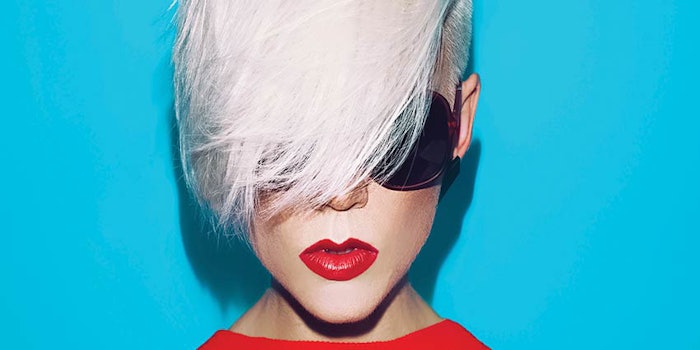
Aged 18–34, millennials have a reputation for being more demanding, more savvy and more connected than the generations preceding them. They are anticipated to yield significant global influence over the coming decade and, according to Pew Research, already account for one in three workers in the United States alone, making them the largest generation in the nation’s workforce.**
Millennials, therefore, offer significant opportunity for beauty brands, particularly as they are the most appearance-conscious age group, according to Canadean’s 2015 research. However, this is not without its challenges.
Glossier encouraged consumers to give suggestions, from the type of texture and fragrance to product pricing.
This cohort is rewriting the rules, with their purchasing decisions being driven by their individualistic and digitized nature. As a result, beauty brands have to rethink their approach to effectively meet the needs of this discerning and complex audience.
The Technology Divide
Looking at specific behaviors and attitudes, millennials are defined not only by their youth but by the societal situation at their point of maturity. Mobile connectivity, the internet and endless information access are all the norm for this cohort.
According to Canadean’s research from 2014, 86% of millennials said they owned a smartphone, compared to 75% of 35–54 year olds. This shows that although consumers as a whole are keeping up with the integration of technology into everyday life, millennials are leaping ahead.
Setting the Selfie Standard
Social media is an integral feature of millennial lifestyles. The concept of online sharing as well as engagement with image-based platforms has resulted in a range of behaviors such as selfies becoming commonplace.
Consumers are closer to celebrities than ever before through social media platforms such as Instagram. And celebrities have set the “selfie standard,” with flawless appearances in the images they share. This is driving the desire of consumers to replicate this in their own images.
Brands Need to Listen
This type of sharing has led to greater empowerment of millennials. They want their voices to be heard and influence their peers and the wider online community with their opinion, be it on a product, experience or event.
As a result, social media and online communities have removed the barriers to direct brand-consumer conversations, making this a growing expectation for millennials.
The demand for uniqueness also propels the appeal of brand and product authenticity, “real” messages and brand values that align with their own.
This desire is evident in that, according to Canadean’s Q4 global survey 2015, two in five millennials say that they share an update on an activity or experience once a week or more. This places more pressure on brands to effectively listen and engage with these vocal consumers.
A Fascination With Self
The world is progressively more globalized, with marketing messages and product offerings increasingly homogenized. Millennials, who are rejecting this phenomenon, seek out alternative solutions that represent their individual style, values and concerns.
This sentiment is illustrated by Canadean’s research from 2014, which highlighted that 60% of millennials agreed that they prefer to be unique and stand out from the crowd, compared to just 47% of 35–54 year olds. Therefore, it is essential for brands to appreciate this unique and individual focus.
Authenticity and Uniqueness
This fascination with self has driven a desire for a greater understanding of personal behaviors, be it consumption, state of health or achievement of goals, which can create demand for personalized technologies that can help to inform more effective product choices and personal management.
At the same time, millennials’ desire to stand out is behind brands’ quest for customized solutions which can best suit individual consumer needs. This demand for uniqueness also propels the appeal of brand and product authenticity, “real” messages and brand values that align with their own.
Ask Your Customer
Many brands have used a combination of these behaviors to inform their brand and product strategy to effectively capture the needs of this audience. One such company is Glossier. The brand developed its Milky Jelly Cleanser by asking the readers of its online magazine and followers on social media what their dream face wash was.
Glossier encouraged consumers to give suggestions, from the type of texture and fragrance to product pricing. By doing so, the brand ensured that it conveyed an authentic and genuine message in terms of listening to individual customer opinions, valuing their needs and giving them the satisfaction of turning their ideas into a tangible product.
Photo-ready Beauty
Similarly, the brand seeks to resonate with this younger audience’s desire to be unique with the slogan “a declaration of who you are and who you make yourself up to be.” By leveraging the popularity of Kendall Jenner on social media, the brand can effectively speak to a generation of consumers who are connected to this celebrity on social media. The range also places Estée Lauder, whose products often focused on meeting the needs of older age cohorts, in touch with a younger consumer base.
Consumer-created Color
Facilitating customization for millennials, the Mink digital make-up pen allows users to transform the colors from any image (for example from a photograph) into a cosmetic using a combined smartphone app and make-up pen device.
The system gives consumers greater freedom in their beauty choices as they are not confined to the cosmetic colors available off the shelf, but can create their own exclusive palettes to suit their personal taste.
This is the Future
Millennials will continue to play a leading role in shaping innovation of the future. Their behaviors will influence the generations which follow them and beauty brands will need to ensure that they effectively engage these consumers to better succeed in the rapidly evolving beauty landscape.










